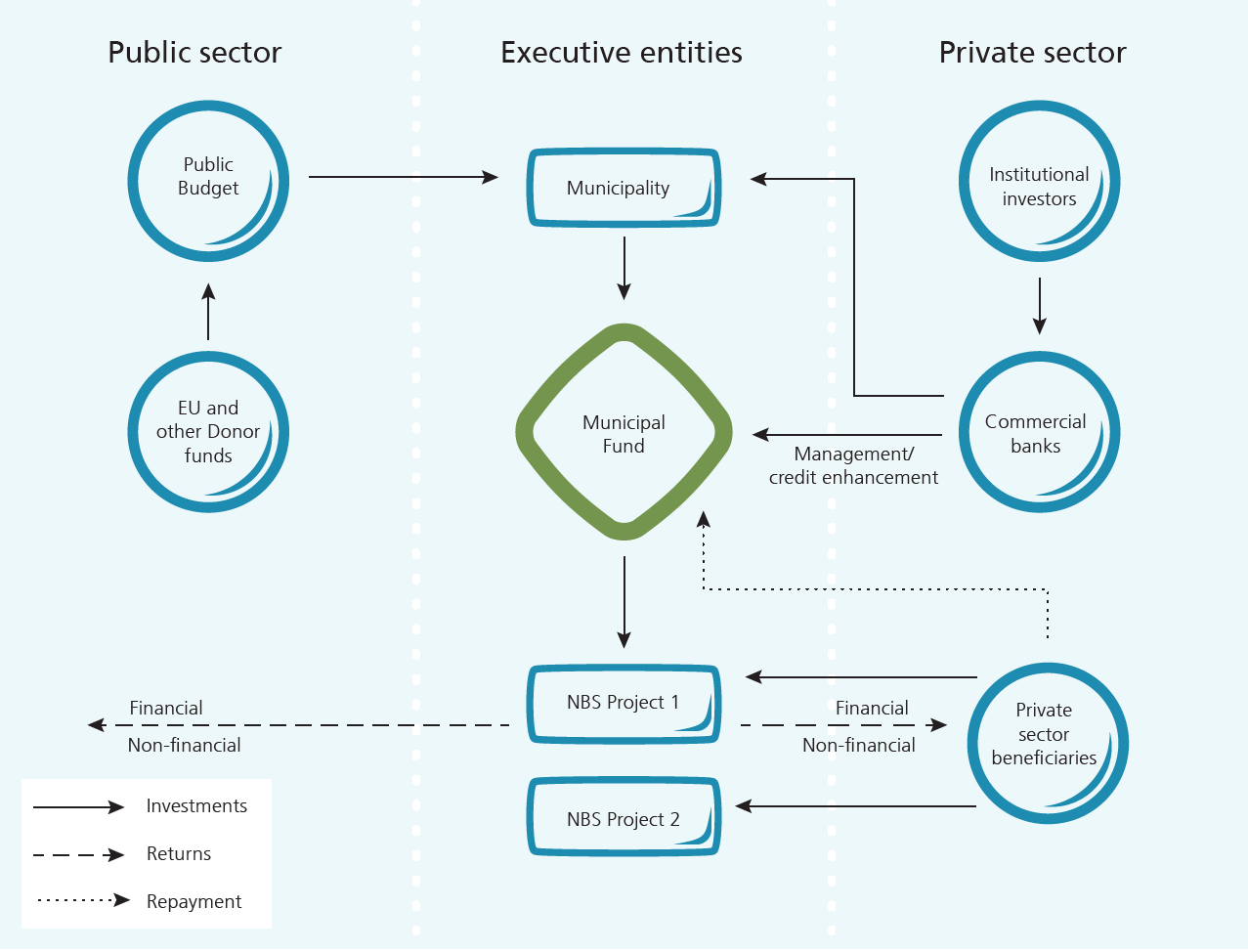
Municipal funds
Establishing municipal funds could be an alternative financing strategy for promoting private sector participation in NBS implementation. Municipal funds could be used to encourage NBS projects that are implemented by local businesses, residents, housing associations and other relevant private profit and non-profit entities. The financial involvement of the municipality often helps attract other investors, such as commercial banks, that could further capitalise the fund.
For successful operation of the fund, the municipality needs to set up business models for the fund that would include the fund structure and standard procedures. Careful planning and risk management are needed to ensure the longevity and functionality of the fund. The precise set-up of the municipal funds might vary substantially depending on the particular city context as well as the nature of the fund and/or projects being funded.
ADVANTAGES & DISADVANTAGES
• enable risk-sharing between the various stakeholders: financial institutions, cities, the borrowers and the fund itself
• good potential to reach additional leverage and also decrease the risk to the lenders
• the municipality has the power to stimulate respective market niches as well as push forward the interventions that align with its strategic goals.
• can boost NBS by supporting local business
• if the supported projects do not generate any savings, the fund is likely to not be sustainable in the long-run without additional external financing
• larger-scale funds i.e. implemented on a sub-national or national level might be more successful in attracting investors and supporting targeted projects.
RISKS
• Credit risk – the financial involvement of municipality in municipal credit funds usually implies its responsibility for the defaults of payments that might need to be compensated to the commercial banks.
• Uncertainties related to the technical and operational challenges of the interventions that are supported by the fund.
• Political risks if the financial mechanism does not achieve the envisaged goals.


